
While the world seems to be always looking for the next big health trend and hidden nutrient gems, one thing that seems to stick around are Omega-3s. As we start moving into the cooler weather here in Chicago and our health becomes a larger concern, Omega-3s can be a huge help.
Omega-3 poly unsaturated fatty acids are a nutrient that our body cannot create on its own and thus we need to ingest it from our diets. The list of nutritional benefits coming from Omega-3s is enormous and with every study done, it seems to grow longer. As a crucial piece of our cell membrane structure, Omega-3s improve heart health by maintaining a consistent rhythm of your heartbeat, reduce blood pressure and triglycerides and maintain stronger tissue cells in the heart. This can drastically reduce future heart issues and prevent repeat issues for people who have had them in the past.
Along with heart health, omega-3s help in the following areas:
- Inflammation in the body
- Decrease liver fat
- Support brain function
- Assist in weight management
- Combat anxiety and depression
- Prevent dementia
- Prevent asthma
- Improve skin health
- Aid in the Immune health
- Combat vision decline
This list is only scratching the surface, and this is only what we see in medical studies!
As a nutritionist seeing this many benefits from enhancing your intake of one nutrient, I feel that it is a simple choice to increase your intake of omega-3s. Many people look to supplements as a source of Omega-3s, and there really is no need. Taking a refined nutrient in pill form is not only costly, but it is foolish if you can fit it into you daily food intake just as easily. Many people do this by adding salmon to their diets, and this is a fantastic way enhance your intake!
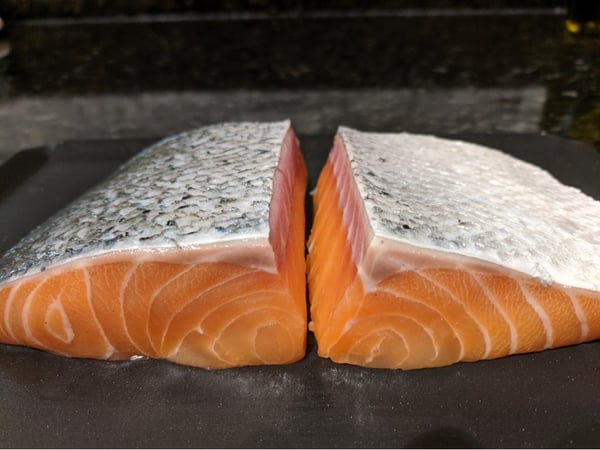
Salmon is one of many fish that are rather high in fats, including Omega-3s. This is because of their tendency to live in cooler waters, and they require more fat to stay warm. While salmon does have a high amount of fat spread throughout their meat as you can see in their striped pattern, many people forget the rather high concentration of fat in and under their skin. I am sad to say that the skin is often removed and thrown away as it can be texturally unpleasant when cooked wrong. Salmon skin has high omega-3s and lots of natural collagen so to remove it is a waste. I will explain how to properly cook a skin-on salmon portion so that it becomes a crisp and enjoyable complement to your salmon's rich and butter-textured meat.
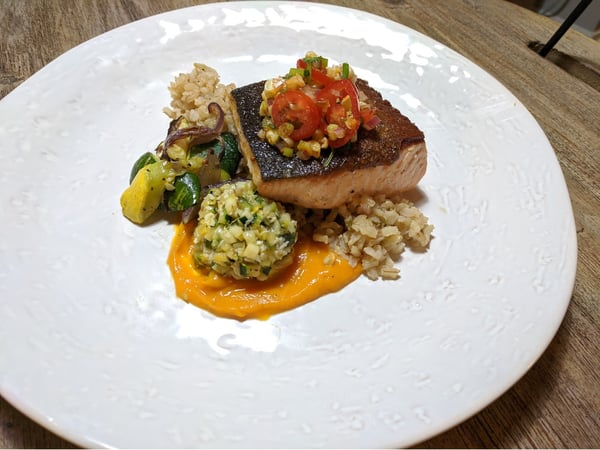
Begin with your salmon skin side up and run your finger over the skin to check to make sure the scales have all been removed. If any remain, simply take a spoon and scrape upward or the opposite direction that the scales are growing to remove them.
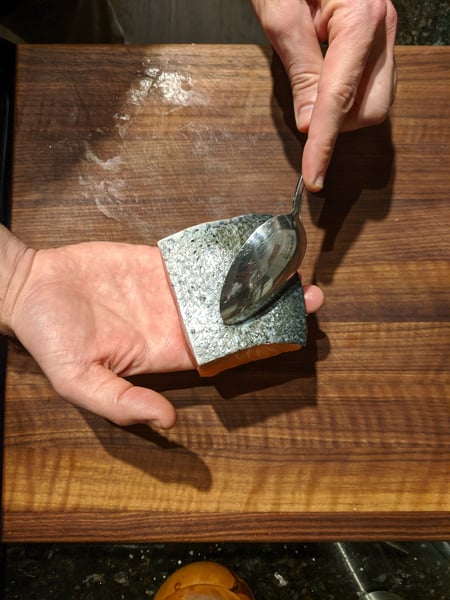
Place the fish on a flat surface. Dry the skin fully and if time allows, let the fish sit at room temperature for 15-30 minutes to allow it to temper. Tempering lowers the drastic temperature difference between the cold meat and the hot pan you are about to cook it in. By warming it slightly, the meat will cook faster and you will reduce the stress on the proteins which can create a dryer final product.
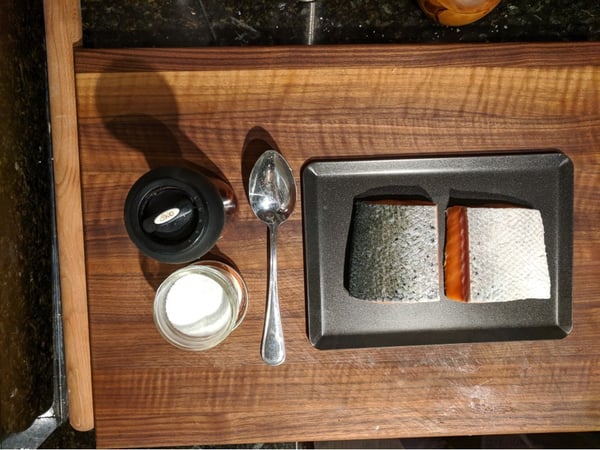
Season your skin side generously with salt and pepper, and make sure your pan is hot.
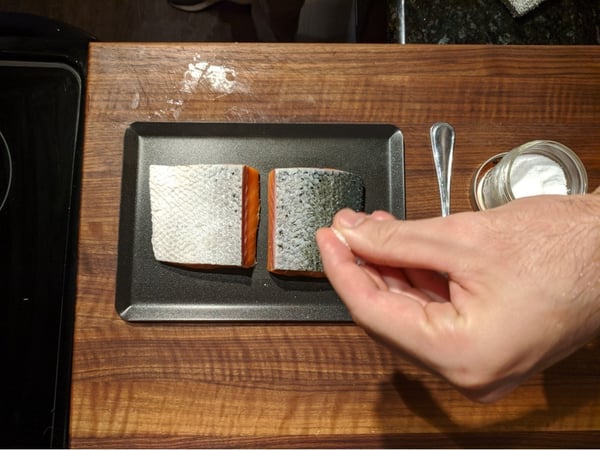
Hold your fish skin side down with your middle finger pressing in the center to arch the skin toward the pan so that you eliminate the risk of the skin curling or having air bubble between the pan and the skin.
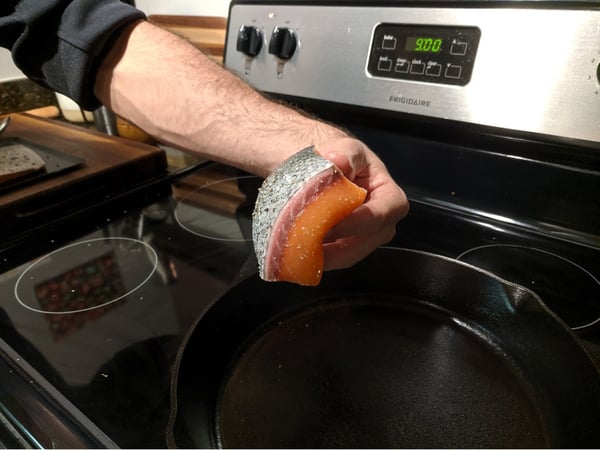
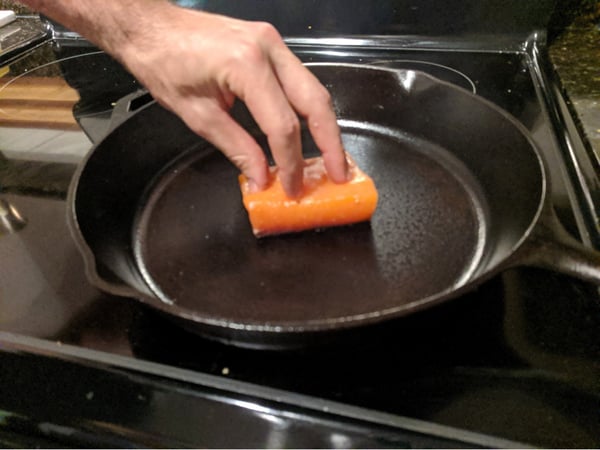
Press gently with the back of your knuckles on the fish. You will feel a bubbling under the meat that will start with larger bubbles and slowly lessen as the residual water is cooked off.
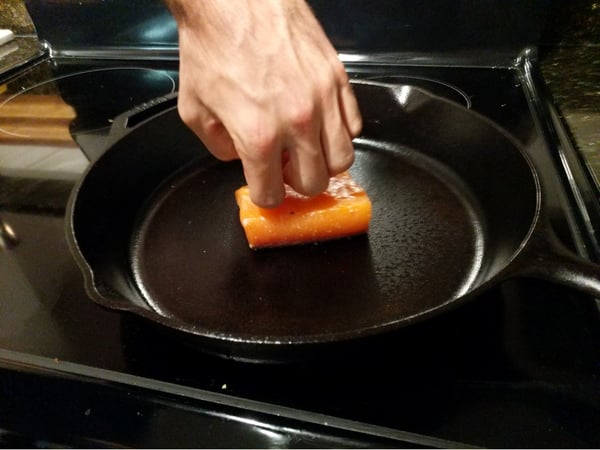
Lower the temperature of your pan to medium and be patient as you are now trying to cook the skin fully and as the fat around it renders it will slowly fry the skin and create a crisp chip like texture. Your fish will cook almost 70% of the way on this side.
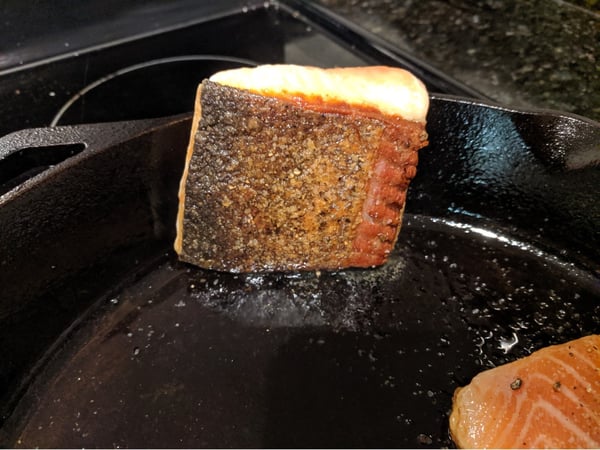
Season the top of your fish and gently flip it to cook the remaining time on this side and remove it from the pan when it reaches your desired temperature.
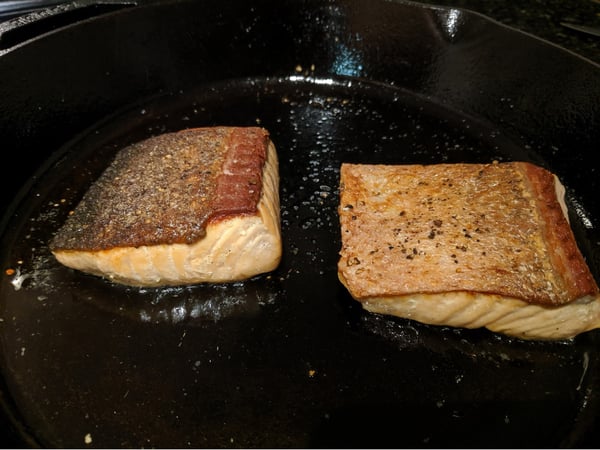
Many people are fans of grilled salmon but, I personally love a seared skin-on salmon. Hopeful you agree after trying these steps the next time you pick up a nice piece of salmon. Think twice before removing that skin!

